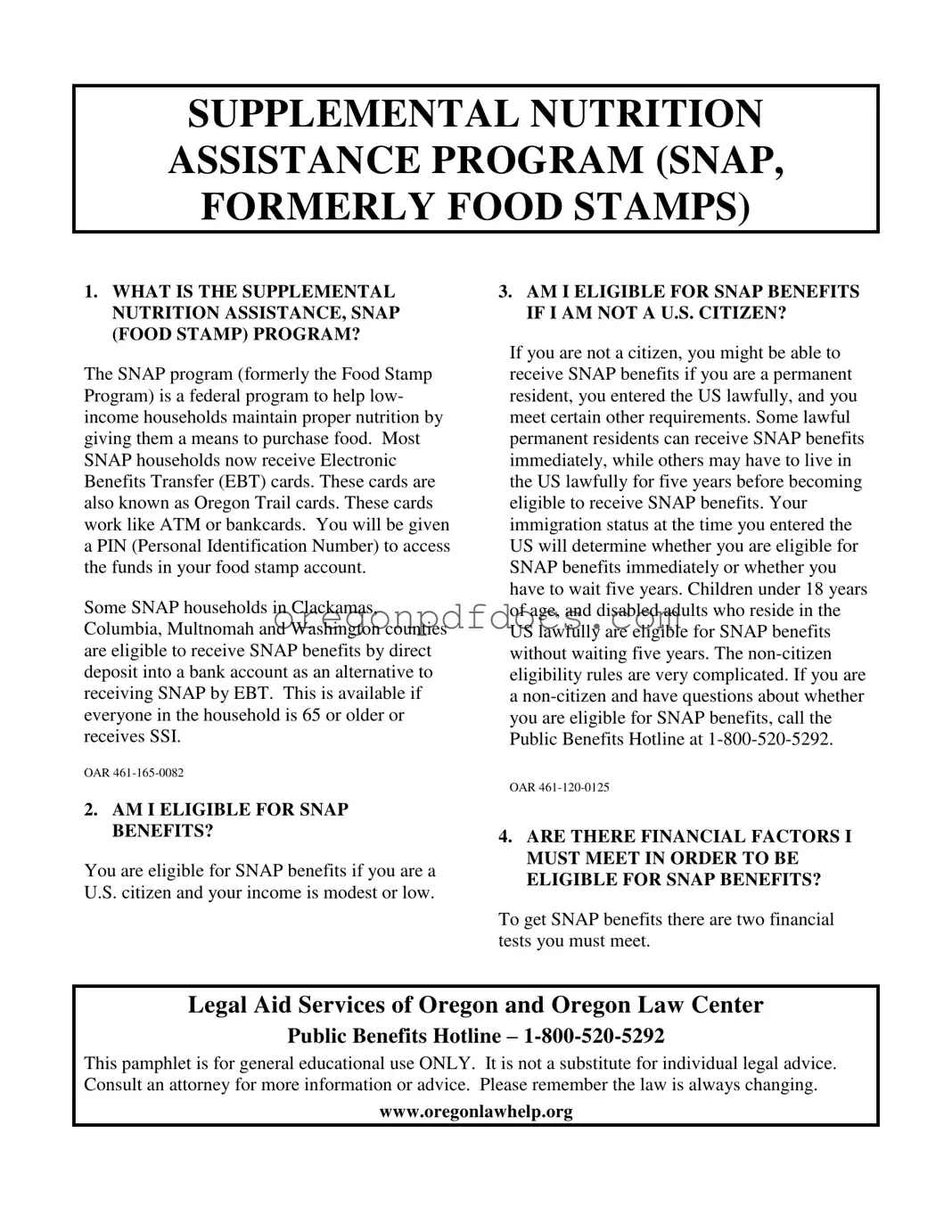Department of Human Services (DHS) |
|
you work at least 20 hours per |
office. |
|
week including self- |
If there are no minor children in the |
|
employment if the self- |
|
employment income is at least |
household, and you are elderly or |
|
|
equal to federal minimum |
disabled, contact the Aging and People |
|
|
wage multiplied by 20 hours |
with Disabilities Office. |
|
|
per week; or |
|
|
|
The agency must issue your SNAP benefits |
|
you are a student responsible |
within30 days from the date you submit your |
|
for the care of a child in your |
application providing you submit the necessary |
|
home and the child is under |
documents to them (i.e., utility bills, rental |
|
age 6 or age 6 through 11 and |
agreements, proof of income and citizenship, |
|
DHS determines that adequate |
information on resources). If you need SNAP |
|
child care is not available; or |
benefits more quickly than that, you should |
|
you are a student who is a |
apply for "expedited" SNAP benefits. When you |
|
single adult with the |
first apply for SNAP benefits, and then once |
|
responsibility of caring for a |
each year after that, you will have an interview |
|
child under 12; or |
in the office or by telephone. This interview |
|
you are student receiving |
should be on the day that you apply for benefits. |
|
TANF |
If you cannot have an interview on that day, you |
|
you are a student who is physically |
can ask for a special appointment. Your |
|
or mentally unable to work and you |
caseworker is required to interview you within |
|
go to school at least half-time; or |
20 days from when you apply. |
|
you are a student between 18 and |
|
OAR 461-115-0210; 461-115-0230 |
|
49 and enrolled in an institution of |
|
|
higher education less than half-time; |
|
Family Services Manual FS B 8 |
|
7. WHAT ARE THE OTHER |
|
or |
ELIGIBILITY REQUIREMENTS FOR |
you participate in an employment |
SNAP BENEFITS? |
|
training activity through the |
(1) |
Students |
|
Workforce Investment Act, a |
|
displaced workers program, JOBS, or |
If you are 18 or older but under 50 and |
|
employer sponsored on-the-job |
you are a post-secondary student, and go |
|
training; |
to school at least half-time, you can only |
|
OAR 461-135-0570 |
get SNAP benefits if: |
|
|
|
You are not disabled, and you go |
If you are a post-secondary student and do not |
|
to school at least half-time, and: |
fall into one of the categories listed above, you |
This pamphlet is for general educational use ONLY. It is not a substitute for individual legal advice. Consult an attorney for more information or advice. Please remember the law is always changing.






